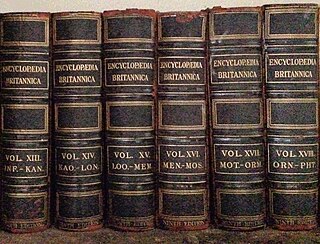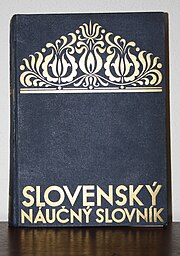The German-speaking population in the interwar Czechoslovak Republic, 23.3% of the population at the 1921 census, is usually reduced to the Sudeten Germans, but actually there were linguistic enclaves elsewhere in Czechoslovakia, and among the German-speaking urban dwellers there were "ethnic Germans" and/or Austrians as well as German-speaking Jews. 14% of the Czechoslovak Jews considered themselves as Germans at the 1921 census, but a much higher percentage declared German as their colloquial tongue during the last censuses under the Austro-Hungarian Empire.

Otto's encyclopedia, published at the turn of the 20th century, is the largest encyclopedia written in the Czech language. For its scope and the quality of the writing, it is comparable to the greatest world encyclopedias of its time, such as Encyclopædia Britannica.
Ján Valašťan Dolinský was a Slovak composer, teacher, journalist, esperantist and collector of folk songs.

Antonín Janoušek was a Czech journalist and communist.
Karel Kavina was a Czech botanist.

The Slovak Cup is the main knockout cup competition in Slovak football.
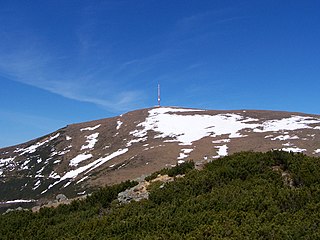
Kráľova hoľa is the highest mountain of the eastern part of the Low Tatras in central Slovakia. Four rivers rise at its foot: Čierny Váh, Hnilec, Hornád, and Hron. The summit, easily accessible by hiking trails from Telgárt as well as by a paved road from Šumiac, offers a panoramic view of Spiš, the Tatras, Liptov, and the Upper Hron Valley. Largely deforested by exploitative timber harvesting in the early 19th century, its timberline was restored to its natural elevation of about 1,650 m (5,413 ft.) through the efforts of Ludwig Greiner in the second half of that century.

The First Czechoslovak Republic was the Czechoslovak state that existed from 1918 to 1938. The state was commonly called Czechoslovakia. It was composed of Bohemia, Moravia, Czech Silesia, Slovakia and Subcarpathian Ruthenia.

Police nad Metují is a town in the Hradec Králové Region of the Czech Republic. The Metuje River flows near the town.

Erich Graf von Kielmansegg was an Austrian statesman. He served as stadtholder of Lower Austria and short time Cisleithanian Minister-President of Austria-Hungary in 1895.

Count Heinrich Karl Clam-Martinic was an Austrian statesman. One of the last Prime Ministers in the Austrian half of the Austro-Hungarian empire, he was called during World War I to head a new cabinet by Emperor Charles on December 13, 1916, soon after the death of Emperor Franz Joseph on November 21, 1916. As Prime Minister, he replaced Ernest von Koerber, but his government only lasted until May 30 1917. He was succeeded by Ernst Seidler von Feuchtenegg (1917-1918), Baron Max Hussarek von Heinlein (1918), and Heinrich Lammasch (1918).

Ernst Wilhelm Engelhardt Ritter Seidler von Feuchtenegg was an Austrian statesman. He served as Minister-President of Austria from 1917 until 1918. His daughter was the actress Alma Seidler.
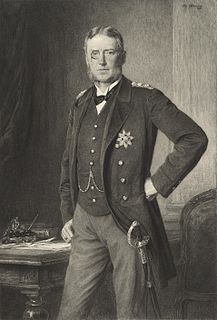
Prince Franz Anton von Thun und Hohenstein, Czech: kníže František Antonín z Thunu a Hohensteina was an Austro-Hungarian noble and statesman.
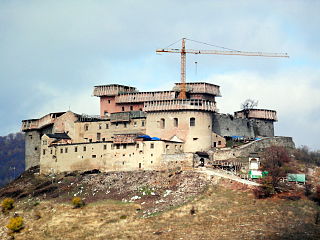
The Krásna Hôrka Castle is a castle in Slovakia, built on a hilltop overlooking the village of Krásnohorské Podhradie near Rožňava, in Košice Region. The first recorded mention of the castle was in 1333. In 1961 Krásna Hôrka was designated a National Cultural Monument of the Slovak Republic. It was said to be one of the country's best-preserved castles. On 10 March 2012 the castle was extensively damaged by fire.

Želízy is a village and municipality in Mělník District in the Central Bohemian Region of the Czech Republic.
Bedřich Bloudek was a Czech military leader, who participated in the Slovak Uprising in 1848.
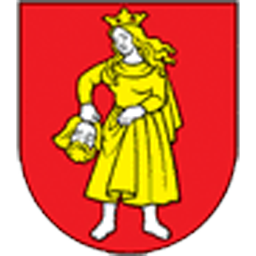
OŠK Slovenský Grob is a Slovak football team, based in the town of Slovenský Grob. The club was founded in 1932.
The Camaldolese Dictionary is a Latin-Slovak dictionary from 1763. The book consists of two parts: the dictionary and brief orthographic and grammatical rules. The autor(s) used a variant of a cultural Western-Slovak with some Central and Eastern-Slovak elements, making it one of most important pre-codification works before the codification of Slovak language by Anton Bernolák. The origin of the dictionary is probably associated with the first known translation of the Bible into Slovak.
